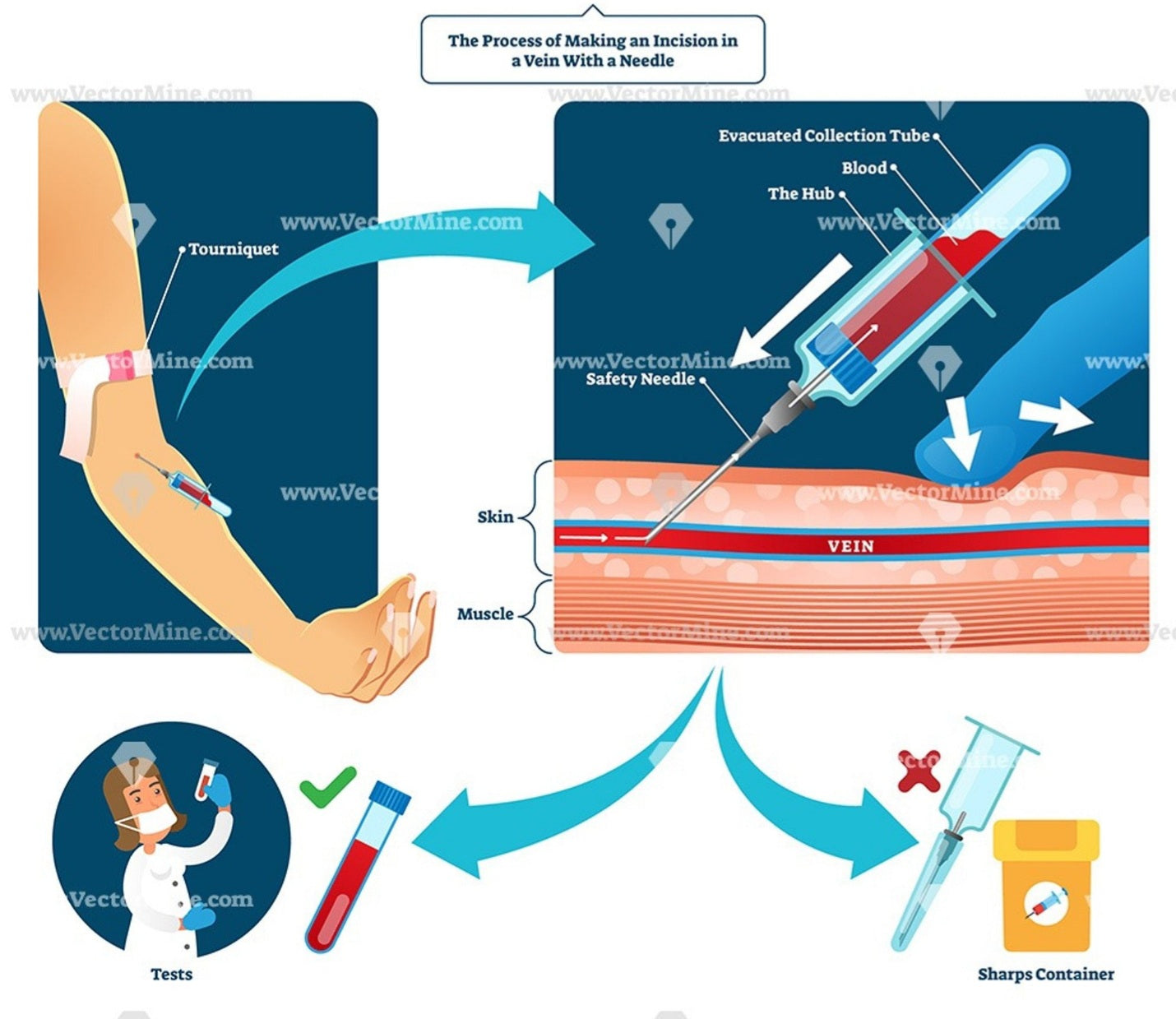The Facts About Northeast Medical Institute - New Haven Campus Phlebotomy Course & Cna Class Uncovered
The Facts About Northeast Medical Institute - New Haven Campus Phlebotomy Course & Cna Class Uncovered
Blog Article
Excitement About Northeast Medical Institute - New Haven Campus Phlebotomy Course & Cna Class
Table of ContentsThe 7-Minute Rule for Northeast Medical Institute - New Haven Campus Phlebotomy Course & Cna ClassNortheast Medical Institute - New Haven Campus Phlebotomy Course & Cna Class Things To Know Before You Get ThisNortheast Medical Institute - New Haven Campus Phlebotomy Course & Cna Class - The FactsA Biased View of Northeast Medical Institute - New Haven Campus Phlebotomy Course & Cna ClassWhat Does Northeast Medical Institute - New Haven Campus Phlebotomy Course & Cna Class Do?The 8-Minute Rule for Northeast Medical Institute - New Haven Campus Phlebotomy Course & Cna Class
The use of such devices ought to be accompanied by various other infection avoidance and control techniques, and training in their usage.For setups with low sources, expense is a motoring element in procurement of safety-engineered devices - PCT Training. Where safety-engineered tools are not available, experienced usage of a needle and syringe is acceptable. Unexpected exposure and certain details about an event ought to be tape-recorded in a register. Assistance services ought to be advertised for those who undertake unexpected exposure.
One of the essential markers of top quality of treatment in phlebotomy is the participation and collaboration of the patient; this is equally helpful to both the health employee and the person. Clear details either composed or verbal ought to be available per individual that undertakes phlebotomy. Annex F supplies sample message for describing the blood-sampling treatment to a client. In the blood-sampling area for an outpatient division or clinic, provide a comfy reclining couch with an arm remainder.
Getting My Northeast Medical Institute - New Haven Campus Phlebotomy Course & Cna Class To Work
Guarantee that the indications for blood sampling are clearly defined, either in a created method or in recorded directions (e.g. in a laboratory kind). Accumulate all the equipment required for the treatment and place it within risk-free and very easy reach on a tray or cart, guaranteeing that all the things are plainly visible.
Where the client is adult and aware, adhere to the steps outlined listed below. Introduce yourself to the individual, and ask the client to mention their complete name. Examine that the lab kind matches the individual's identification (i.e. match the person's details with the research laboratory kind, to make sure exact recognition). Ask whether the patent has allergies, fears or has actually ever before fainted during previous injections or blood draws.
Make the individual comfy in a supine placement (when possible). Location a tidy paper or towel under the person's arm. Discuss the examination to be done (see Annex F) and acquire verbal authorization. The client has a right to decline a test any time before the blood sampling, so it is vital to make certain that the patient has actually understood the treatment.
How Northeast Medical Institute - New Haven Campus Phlebotomy Course & Cna Class can Save You Time, Stress, and Money.
Prolong the client's arm and inspect the antecubital fossa or forearm. Locate a capillary of an excellent dimension that is noticeable, straight and clear. The layout in Section 2.3, shows usual positions of the vessels, yet several variants are feasible. The typical cubital capillary lies in between muscular tissues and is normally the most simple to penetrate.
DO NOT place the needle where capillaries are diverting, due to the fact that this enhances the opportunity of a haematoma. Situating the capillary will assist in figuring out the correct dimension of needle.
Haemolysis, contamination and existence of intravenous liquid and medicine can all alter the results (39. Nursing personnel and medical professionals may access central venous lines for samplings complying with protocols. Nonetheless, samplings from main lines bring a threat of contamination or erroneous lab test results (https://www.ted.com/profiles/47186180). website link It is appropriate, but not ideal, to attract blood specimens when initial presenting an in-dwelling venous device, prior to connecting the cannula to the intravenous liquids.
6 Simple Techniques For Northeast Medical Institute - New Haven Campus Phlebotomy Course & Cna Class
Permit the area to dry. Failure to enable enough get in touch with time raises the risk of contamination. DO NOT touch the cleaned website; specifically, DO NOT position a finger over the vein to assist the shaft of the exposed needle. It the site is touched, repeat the sanitation. Do venepuncture as follows.
Ask the client to develop a hand so the veins are much more famous. Go into the blood vessel promptly at a 30 degree angle or much less, and remain to introduce the needle along the blood vessel at the most convenient angle of access - Phlebotomy Courses. As soon as adequate blood has actually been gathered, release the tourniquet prior to withdrawing the needle
5 Easy Facts About Northeast Medical Institute - New Haven Campus Phlebotomy Course & Cna Class Described
Take out the needle gently and apply mild stress to the website with a tidy gauze or dry cotton-wool ball. Ask the person to hold the gauze or cotton wool in area, with the arm prolonged and increased. Ask the patient NOT to bend the arm, because doing so causes a haematoma.

Not known Factual Statements About Northeast Medical Institute - New Haven Campus Phlebotomy Course & Cna Class
Where possible, keep the tubes in a rack and move the rack towards you - https://www.imdb.com/user/ur184085558/. If the example tube does not have a rubber stopper, inject incredibly slowly into the tube as decreasing the stress and speed used to transfer the sampling decreases the risk of haemolysis.

Report this page